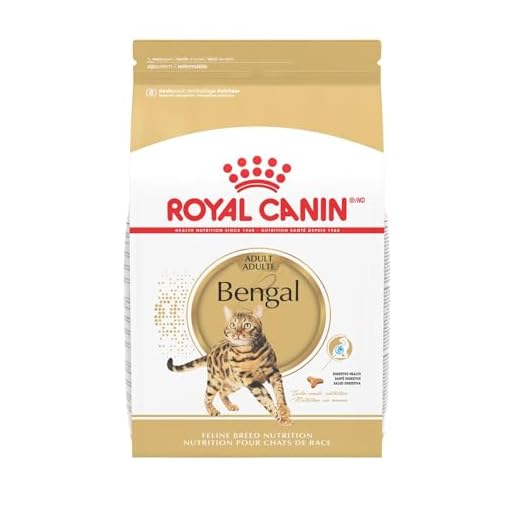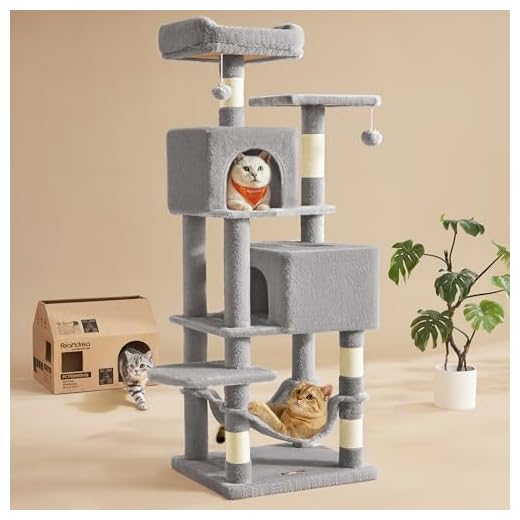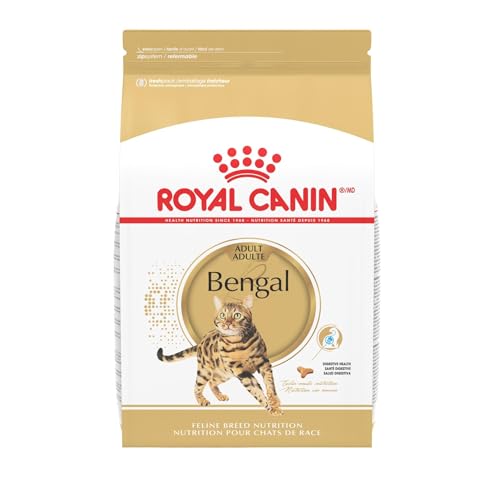



Curious about feline friends with a wild appearance? Check out the Bengal. Their stunning rosettes and sleek bodies make them a favorite among those who adore exotic looks. With a playful personality, these beauties are not just a pretty face; they bring energy and enthusiasm into any home.
Next on the list is the Ocicat. Despite being a domesticated breed, its spotted coat mimics the wild cat aesthetic flawlessly. Ocicats are known for their intelligence and social nature, making them excellent companions for families and individuals alike.
Another fascinating option is the Savannah. A hybrid breed, this cat combines the charm of domesticity with the exotic flair of the serval. Their tall stature and unique markings create an eye-catching presence, and they are known for their affectionate and adventurous spirits.
If you’re seeking a more rare find, consider the Cheetoh. This breed is a cross between a Bengal and an Ocicat, resulting in a strikingly spotted coat. Cheetohs are playful and affectionate, making them a delightful addition to any household.
Lastly, the Ashera, though controversial, is known for its leopard-like features. With its large size and striking coat, this breed is sure to turn heads. Asheras are sociable and enjoy interacting with their human companions.
Top 5 Domestic Cat Breeds Resembling Leopards
Here are five breeds that catch the eye with their wild appearance:
Bengal
Bengals are known for their stunning spotted coats, reminiscent of a leopard’s fur. With a sleek build and energetic demeanor, they are playful companions. Their markings can vary, but the rosettes and marbling are a striking feature.
Savannah
Savannahs, a hybrid of domestic cats and servals, boast long legs and distinctive spots. Their unique appearance and bold personality make them stand out. Expect a lively and intelligent companion that requires plenty of interaction and stimulation.
Ocicat
This breed is completely domestic, yet its coat mimics the wild cat look. Ocicats exhibit a spotted pattern similar to that of a leopard. Their friendly nature makes them great family pets, as they thrive on human interaction.
Cheetoh
Cheetohs are a cross between Bengals and the American Bobtail. Their appearance features bold spots and a muscular build. Known for their affectionate behavior, they enjoy being around people and are quite social.
Caracat
This rare hybrid between a domestic cat and a caracal features a striking appearance with tufted ears and a sleek coat. Caracats are energetic and intelligent, needing plenty of exercise and mental stimulation to stay happy.
For any cat owner, ensuring the well-being of these breeds is key. Products like stool softener for cats can help maintain their health and comfort.
Understanding the Genetics Behind Leopard-Like Patterns
Genetic variations play a significant role in creating patterns reminiscent of wild felines. The presence of specific genes influences coat coloration and markings. For instance, the agouti gene affects the distribution of pigment in the fur, leading to distinct spots or stripes. This gene is crucial in producing the spotted pattern found in breeds resembling leopards.
Key Genetic Factors
Some breeds inherit a combination of dominant and recessive alleles that contribute to their unique appearance. The Ticked tabby gene, responsible for the agouti effect, can create a wild-like look in domestic breeds. Additionally, the patterning gene known as “Spots” can lead to the formation of rosettes, similar to those seen on larger cats. Understanding these genetic elements helps breeders create specific aesthetic traits.
Breeding Practices
Selective breeding techniques are often employed to enhance these leopard-like features. Breeders focus on pairing individuals that exhibit desired traits, ensuring that the offspring inherit these genetic markers. Monitoring lineage and genetic health is vital for maintaining both the appearance and well-being of these adorable companions. This meticulous approach results in cats that not only resemble wild counterparts but also carry the charm of domesticity.
Care and Maintenance of Leopard-Patterned Felines
Regular grooming is key to maintaining the beauty of my spotted coat. Brush at least once a week to reduce shedding and prevent matting. Use a slicker brush or grooming mitts designed for short-haired breeds.
Dietary Needs
Nutrition plays a significant role in keeping my coat healthy. High-quality protein sources like chicken or fish should be the primary ingredients in my food. Look for brands that avoid fillers like corn and soy. Always provide fresh water to keep me hydrated.
Health Checkups
Routine veterinary visits are essential. Ensure vaccinations are up to date and schedule annual checkups. This helps catch any potential health issues early. Regular dental care is also important; consider dental treats or brushing my teeth to prevent plaque buildup.
| Care Aspect | Recommendations |
|---|---|
| Grooming | Weekly brushing with a slicker brush |
| Diet | High-protein food, fresh water |
| Health | Annual vet visits, dental care |
| Exercise | Daily playtime with interactive toys |
Keep my environment stimulating. Provide toys that engage my hunting instincts, like feather wands or laser pointers. Regular playtime keeps me active and healthy.
Behavioral Traits of Leopard-Like Felines
Affectionate and social, these beautiful creatures often display a mix of playful energy and independence. Understanding their behaviors can enhance the bond between you and your unique companion.
Key Behavioral Characteristics
- Curiosity: Love to explore their surroundings, often investigating every nook and cranny.
- Playfulness: Enjoy engaging in interactive play, making toys essential for their happiness.
- Vocalization: Some tend to be chatty, communicating their needs and desires through various sounds.
- Affectionate Nature: Many show strong loyalty and affection towards their humans, often seeking attention and cuddles.
- Territorial Instinct: Can exhibit protective behaviors over their space, which is typical for many feline breeds.
Social Interactions
These animals thrive in environments where they can socialize, whether with humans or other pets. It’s crucial to introduce them to new companions gradually to ensure comfort and reduce stress. Regular playtime and interaction help prevent boredom and behavioral issues.
For those seeking to enhance their experience with these charming companions, consider incorporating engaging toys and climbing structures. A well-designed backpack can also provide a safe space for outings, allowing exploration beyond the home.
Observing and understanding these behaviors will lead to a fulfilling relationship, enriching your life and theirs.
How to Choose the Right Leopard-Like Cat for Your Home
Consider your living space. If you have a smaller apartment, a breed like the Bengal might suit you better due to its playful yet compact nature. Larger breeds like the Savannah require more space and stimulation.
Evaluate activity levels. Some leopard-like felines, such as the Ocicat, thrive on play and interaction, needing daily engagement. Others, like the Cheetoh, may enjoy a more relaxed environment, still requiring some playtime but less intensity.
Assess grooming needs. Breeds with short coats, like the Bengal, require less maintenance, while those with longer fur, such as the Serengeti, may need regular brushing to prevent mats and tangles.
Temperament and Family Compatibility
Consider your family dynamics. If there are children or other pets, the Abyssinian might be a great choice, known for its sociable and friendly demeanor. On the other hand, the Caracal could be less tolerant of loud environments or young kids.
Research health considerations. Some breeds are predisposed to specific health issues. Make sure to choose a reputable breeder who prioritizes health testing to ensure your new companion will live a long, healthy life.
Cost and Availability
Budget appropriately. Some breeds can be quite expensive, both in initial costs and ongoing care. Be prepared for veterinary expenses, food, and supplies. Check local shelters or rescues for leopard-patterned types, which may offer adoption options at a lower cost.








